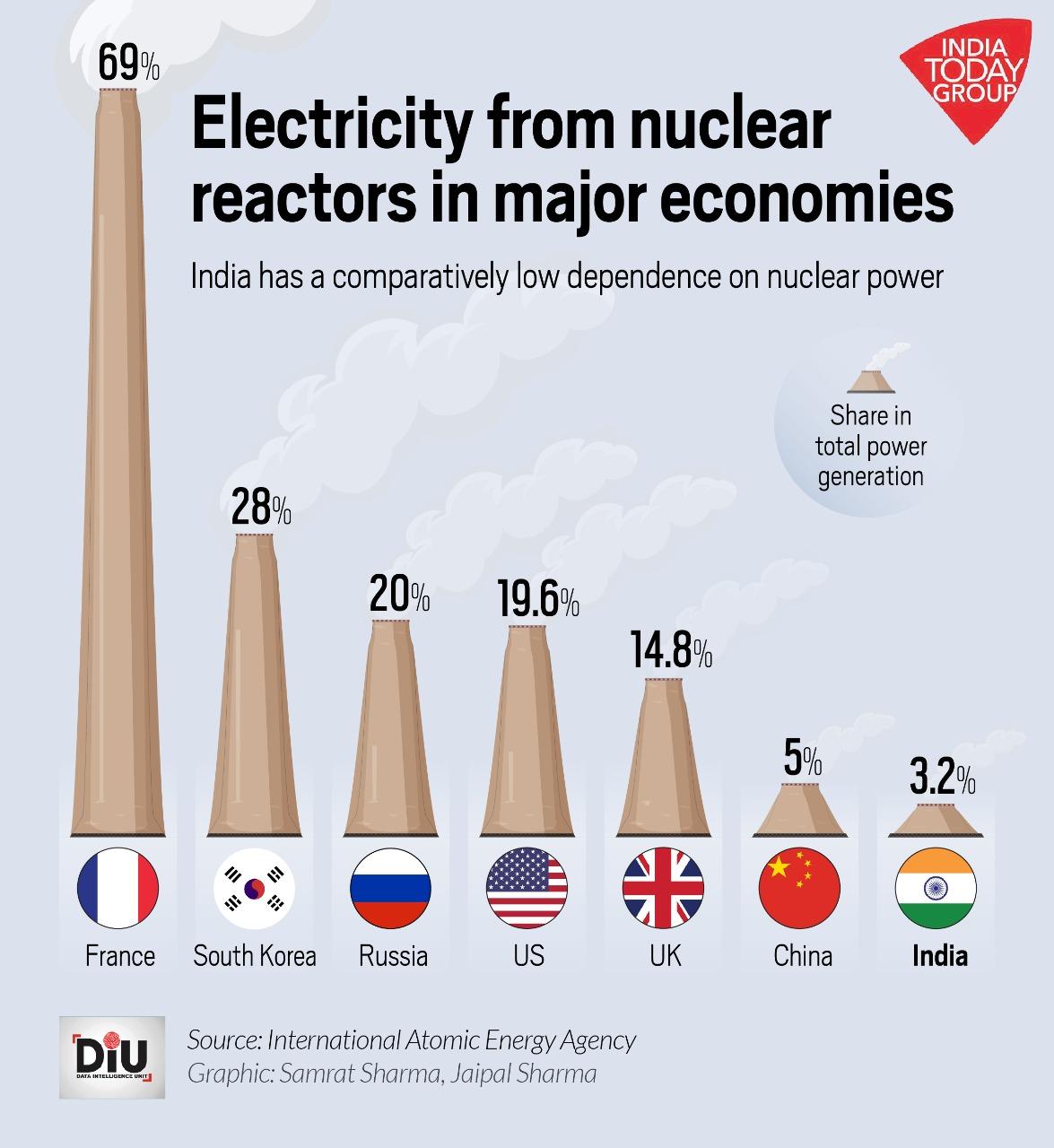The global fight to prevent climate change and arrest the use of fossil fuels just received a shot in the arm. The latest success in the field of nuclear fusion has suddenly made the transition to clean energy so much smoother. Power generated through nuclear energy has already been illuminating many parts of the world, including India. However, the danger encompassing the radioactive waste generated and the rare availability of the raw material — Uranium — have always been a concern. With nuclear fusion, both these problems are taken care of and the power generated is also much higher than before.
“Nuclear fusion has the potential to provide a clean, safe, and abundant source of energy, as it does not create any long-lived radioactive nuclear waste. It produces helium which is inert. Tritium is also produced, a beta emitter with a short half-life,” Dr Archana Sharma, a CMS experiment principal scientist in the Physics Department at CERN, Switzerland, told India Today.
How does it differ from existing nuclear fission reactors?
Nuclear fusion is distinct from nuclear fission in several ways. Fission splits atoms to release energy while fusion combines them to generate it and thus more energy is produced. Another advantage is that the fusion reaction needs significantly less energy to start and maintain, noted Dr Sharma.
At present, France, Ukraine, Slovakia, and Belgium generate more than half of their energy requirement through nuclear fission. Nuclear energy constitutes 69 per cent of France’s overall energy requirement, while the proportion is 3.2 per cent for India.




No comments:
Post a Comment